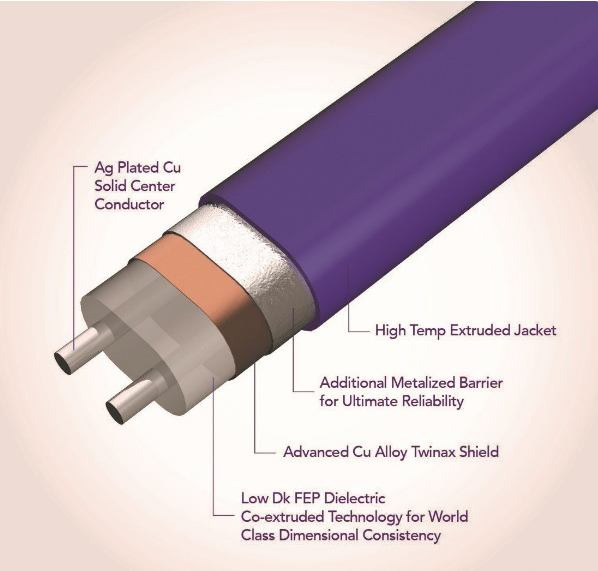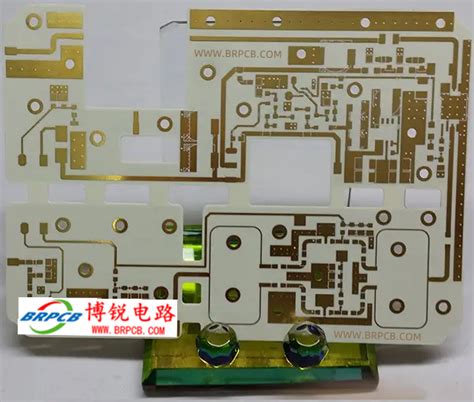How to Choose a Tool for PCB Design Collaboration
We know that once the circuit design is complete, it is handed off to a “PCB designer” who then makes the board layout. Now, with products as complex as tablets, smartphones, and even video games, no one person has anything to do with the PCB. Products are designed by teams of experts, and without effective collaboration, time is wasted and errors occur.
This process is becoming increasingly complex because teams are often not in the same place, so software tools that coordinate, record, and share between teams are key to a smooth workflow. Momoko takes you through several questions that are often asked when evaluating PCB tools with strong collaboration features:
Are there any disadvantages to working in a PCB design environment without a strong collaborative PCB design tool?
How can a PCB design tool with strong collaboration tools benefit your team?
What collaboration features should you look for when considering the choice of PCB design tools?
The Dilemma of Working in a Collaborative PCB Design Environment
The first challenge in a collaborative atmosphere without the right tools is communication. Internal communication leads to obstacles, delays, and failures in the design process – wasting time and money. Here are four serious issues that have a significant impact on a collaborative design environment.
No Synchronized Design Data: Without collaborative tools, designers may inadvertently change the same part of the design, resulting in fatal data conflicts. Team members may choose to use outdated versions, redo unnecessary work or try to eliminate inconsistencies.
Design teams use more complex practices between MCAD and ECAD designers in PCB design work, using static transfer of databases. While using exchange files is better than nothing, it is very difficult to determine what data has changed, where the change occurred and who made the change. Without this information, true synchronization does not occur and the same problems will still arise.
Inefficient teamwork on the same design: Being able to see all the work being done on a design is essential for an effective workflow. All engineers involved need to understand each other’s intentions and visions, which requires comprehensive communication.
However, email threads, notes and other communication methods can undermine efficiency and productivity in the workflow. The process is cumbersome, and if someone is not online, information can be lost – even if they receive the email, they may not read it in time.
Intermittent or infrequent data exchange often leads to product-related problems, which means designers must repeat their steps, determine the source of the violation and re-update their design. Team members are essentially doing the job twice to ensure the overall design can be completed by
Communication across different design domains: While the work of a PCB designer is only one element of the complete end product, there are actually many people involved. Electrical and mechanical engineers and CAD technicians all have their own jobs to do, and on the manufacturer’s side, there are manufacturing experts, logistics and supply chain specialists.
Each group that touches the design uses a different design domain, making it nearly impossible to communicate and interpret data in the same “language” in their own native applications. Without integrating multiple domains into a simple, streamlined workflow, multiple designers with access to the same board can impact the work of others who have access to the project – creating an engine for costly and time-consuming errors.
Lack of Accountability: A team that does not work in a collaborative atmosphere for PCB design will be frustrated at the end of a project when finding considerable conflict means it’s back to the drawing board. Errors are caused by lack of communication and failed synchronization of design data. But without a way to track changes to the design and address the source of the error in a non-collaborative work environment, there is no accountability or transparency. Worse, team members may make mistakes without knowing it. So, mistakes continue to be made, resulting in additional costs and more wasted time, which affects productivity.

Benefits of PCB Collaboration: Efficiency and Consistency
If you work in a non-collaborative environment, many of the pitfalls may be very familiar to you. Mistakes are frustrating and waste your valuable time. In general, the benefits of team collaboration tools are to increase efficiency and productivity, and maintain consistency to eliminate redundancies that lead to PCB design conflicts. The specific advantages of collaboration tools further highlight the disadvantages of non-collaborative workflows.
Work with each other, not against each other: Collaboration tools allow all team members to see the same board with multiple designers working simultaneously, and see the differences between different versions. Managers can use or remove changes as needed without affecting the work of individual designers. With the appropriate permissions, everyone can add comments and provide feedback in a streamlined review process, all in real time
Simplified design data management throughout the workflow: To avoid conflicts, it is critical that all team members adopt a single source of design data. In a fully collaborative environment, each project created and applied to a design has an “approval status” to maintain the integrity of the data. Projects are managed within the platform, not informally through emails and notes.
Improved comparison management: Collaboration solutions provide tools that can compare and detect differences between multiple PCB versions with precise accuracy. The user can present the changes in front of them and decide which changes to accept and reject with just a few clicks. Most platforms include the ability to manage a large number of failures and resolve them without expensive incidents that can cause delays.
Consistency within software configuration: A collaborative team environment means that software configurations are controlled through a centralized system. All team members use tools that meet the same organizational standards to ensure consistency and eliminate conflicts.
Collaborate from anywhere: Collaborative solutions bring your design team together to develop boards, whether members are across the hallway or across the country. Engineers can work from home when necessary, designers can continue tasks while on the go, and you can incorporate remote employees into permanent maintenance employees.
Ability to collaborate beyond the PCB design team: Unparalleled software environments integrate all tasks, projects, and data into a single package for a streamlined design process. You can collaborate with other designers outside of your immediate team without facing challenges in multiple areas. Some PCB design team collaboration tools provide links to suppliers, allowing you to get real-time pricing and quantity accuracy from the suppliers you use most frequently.
Focus on the work, not the workflow: Collaboration tools manage communications and handle the back-end processes involved when you work as a PCB design team. They also automate certain processes and detect key factors that lead to errors. Engineering teams can focus more on the work and less on the workflow. With more time freed up because of fewer communication hassles, they can work on innovative, creative designs.

Six Key Characteristics of PCB Collaboration Tools
By implementing the right tools that fit your needs, you can reap the significant benefits of interconnected, communication-rich collaboration. When considering your choice of PCB collaboration tools, consider the following features to ensure ROI and maximum productivity.
Real-time Collaboration Tools: PCB design in a team environment requires tracking of tasks being conducted by all designers working on the board at any given time. Tools that provide you with detailed information about other users’ activities are necessary, including who is logged into the system and who has the same board as the local copy. Look for a solution with a centralized dashboard that records collaborators and work area details in the same collaboration server path.
Version Control: Team collaboration on PCB design requires a version control system that allows you to:
- Easily store all project files in a central repository with backup redundancy;
- Undo changes to one or more files;
- Store and access any board from any point in time throughout its development history;
- Work independently in a collaborative environment with local copies of the files you need
- When development reaches a certain stage, it can be uploaded to the repository.
Work Areas: As a designer, you can more effectively use a PCB collaboration solution that allows you to decide your own work areas. All users should be able to mark out an area on the board. For best navigation, the work area should be easy to find and free of clutter, so you can focus on the task at hand instead of manipulating the software. In addition, it is critical that the PCB collaboration platform allows each user to view the work areas of other designers who have defined them as their own space on the same board.
Processing power: In PCB design collaboration, you should have access to tools that allow you to seamlessly connect and compare. When you are the only person working on a particular board, you need to be able to check your version:
- against one that exists in a central repository;
- against an older version that exists in a central repository;
- or against one that is stored on a hard drive or network.
Handling deviations and merges is a key feature you need in a PCB collaboration tool. You must be able to detect and resolve failures using a sophisticated fault engine that identifies the slightest conflict between two boards. In a collaborative work environment, this means your PCB tool must operate in two different ways:
Two-way comparison, which shows the difference between your current board and another version: what it is now versus what it was before.
Three-way comparison when someone else is also accessing the same board. This avoids the situation where you and a team member are working on the same board, but you want to see what your colleague has done – and potentially incorporate changes into it. A three-way comparison tool lets you compare:
- the original version you checked out from the repository;
- the version to which you applied changes;
- with your colleague’s version.
With two-way and three-way comparison tools, the display can become cluttered, leading to errors and inconsistencies for designers. Therefore, when considering your choice of PCB collaboration tool, look for a solution that can display multiple board versions clearly and legibly.
Merge resolution comparisons: A PCB solution with two-way and three-way comparison tools should also allow you to merge changes into your version before you merge them back into the central repository. The most effective PCB design and collaboration tools will also notify you when a merge is necessary due to another user’s activity.
Resolve issues: In a PCB collaboration system, you should be able to resolve adverse effects by merging those detected in the original document into the current version of the board. You can increase productivity by choosing a solution that automates this task based on your settings. Of course, you will want PCB design tools that also let you select certain changes to keep and those to bring in from other users’ work.

Summary
In the current PCB design environment, engineers do not always communicate closely with the rest of the design team. Most products are developed through partnerships that cover groups that may span several countries and continents. Communication is critical in a collaborative environment. Poor communication leads to errors, unresolved differences, and version inconsistencies – ultimately costing time and money in the production process.
For effective collaboration, a PCB design solution must implement these key features:
Allow multiple users to access the same board, work on it and save it to storage – without affecting others’ tasks;
Increase traceability and accountability for all team members;
Accurately compare various versions of the same board and detect different versions;
Resolve identified differences and allow users to choose what to do next;
Automatically handle large difference volumes and take resolution actions without creating conflicts.






